Summary
The first time multi-increment® sampling method (MIS) was applied and implemented for all dioxin samples areas at Bien Hoa airbase. By using this method, not only the vertical and lateral extent of dioxin contamination on and around the airbase were excactly delineated but also the amount of dioxin-contaminated material that must be remediated was determined in order to close dioxin exposure pathways. From 2014 to 2016, the sampling and analysis process to evaluate comprehensive dioxin contamination were carried out by the co-operation of the United States Agency for International Development (USAID) and South Vietnam that includes Academy of Military Science and Technology/Ministry of National Defence. In this article, the sampling and handling process using MIS method were described to determine and assess the level of dioxin contamination; in order to implement remediation activities as well as provide updated information on the status of dioxin contamination to those residents living in close proximity to contaminated areas.
* Keywords: Agent orange/dioxin; Multi-increment® sampling method; Bien Hoa airbase.
I. INTRODUCTION
Viet Nam has known as a country that has many dioxin hotspots in the world. The most significant contaminated areas are at the Da Nang, Phu Cat and Bien Hoa airports due to high dioxin concentrations remaining decades after large volumes of agent orange and other defoliants were handled [2, 3, 11], At these sites, the dioxin concentrations are determined much higher than allowed concentrations in National technical regulation on allowed limits of dioxin and dioxin discharge standards [1, 7, 8]. Agent orange/dioxin residues are stored, leaked, spilled that can cause several hazardous health problems in human beings [3, 7]. Bien Hoa airbase is recognized as a dioxin-contaminated hotspot in Vietnam due to high TCDD concentrations remaining decades after large volumes of agent orange and other herbicides were stored, handled and spilled at the airbase during the United States - Vietnam War) [11, 12], According to United States military data, the airbase was used to store and handle 98,000 45-gallon (170-liter) barrels of agent orange, 45,000 45-gallon (170-liter) barrels of agent white, and 16,000 45-gallon (170-liter) barrels of agent blue (DOD 2007).
Dioxin contamination at the airbase, coupled with the close proximity of large numbers of airbase and Bien Hoa city residents to the areas of dioxin contamination, poses a risk to human health. Given recent population growth estimates of Dong Nai province (Dong Nai Statistical Office 2013) it is estimated that the current population living in the city wards surrounding the airbase and on the airbase itself is approximately 120,000 people. Therefore, institutional controls, containment, and/or remediation is required to protect human health and the environment.
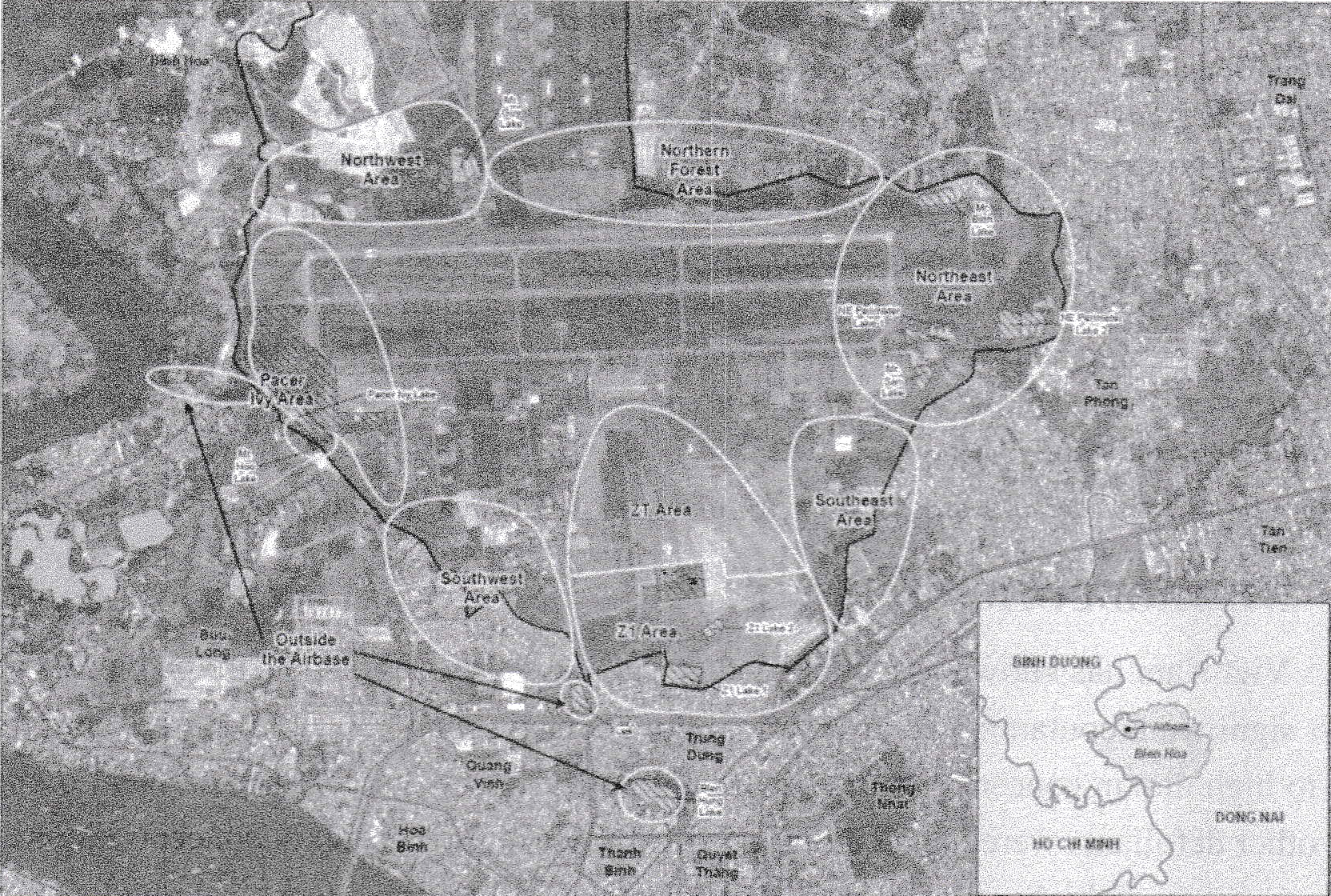 |
Figure 1. Bien Hoa airbase location map and areas of known and potential dioxin contamination [4]
The analytical data collected prior to 2014 provided an understanding of dioxin contamination at the airbase and identified key dioxin source areas and exposure pathways; however, additional data were needed to refine the lateral and vertical extent of contaminated material requiring remediation; alternate characterization was needed to make a more refined contaminated volume estimate; and an updated review of technologies and alternatives was needed to guide decision-making related to site remediation. Therefore, in order to fully characterize the nature and extent of dioxin contamination across the airbase, an extensive sampling program was implemented by the co-operation of USAID and Vietnam in November - December 2014 and March - April 2015. It is important to note that these earlier studies relied on discrete soil sampling methods whereas this sampling process employed the multi-increment® sampling (MIS) methodology. The MIS method was selected to generate results with significantly less variability and a higher statistically-defensible level of confidence than discrete sampling or less robust composite sampling methods. Soil and sediment sampling at the airbase was conducted at each of the nine areas using the MIS method. In this article, we summarized the soil and sediment sampling process using MIS method and the result of dioxin contamination at Bien Hoa.
II. MATERIALS AND METHOD
2.1. Areas of sampling
Bien Hoa airbase areas of sampling (as mentioned in the Report on co-operation of USAID and Institute of Military Technology and Science results).
2.2. Methods
2.1.1. Multi-increment® sampling method (MIS) [4, 5]
Bien Hoa airbase areas of sampling were divided into decision units (DUs) that were considered a reasonable size to assess dioxin exposure and to estimate average dioxin concentrations. Within each DU, multiple depth intervals were sampled, and each depth interval within a DU comprised a single MIS sample derived from 30 aliquots/intervals.
2.1.2. Sub-decision units sampling
Each DU (consisting of 30-point composite) was further divided into three screening level sub-decision units (sub-DUs). In each sub-DU, a sub-sample was collected that consisting of 10-point composite.
The sub-samples that supposedly related to sampling of DU results were analyzed in order to further refine the contaminated volume.
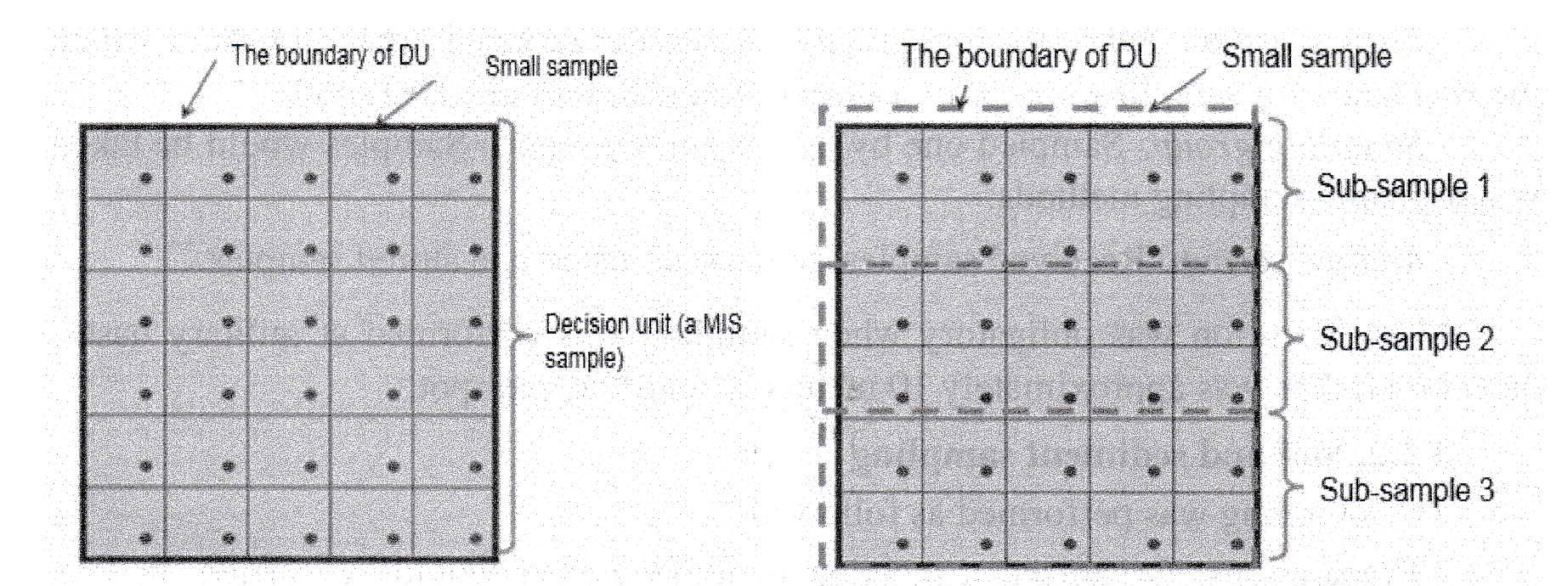 |
Figure 2. Multi-increment® sampling method (MIS)
2.2.2. Analysis method
The dioxin/furan contamination in soil, sediment, air samples were analyzed using the Instruction HD-PTD-02 and HD-PTD-06 (based on EPA 1613 - U.S. Environmental Protection Agency Office).
2.2.3. Estimate of volume of contaminated material method
The areas and depths where the exceed the proposed cleanup goals were identified and calculated: Volume = Area x Layer Thickness.
Areas that had a concentration below the cleanup goal, but within 15% of the cleanup goal, were added to the volume estimate. If the MIS sample exceeded the cleanup goal, the subsample results were used to refine the area of contamination.
2.2.4. Standards
- TCVN 8183:2009, dioxin thresholds in soil and sediment defines the maximum allowable concentration polychlorinated dibenzo-p-dioxins (PCDDs) and polychlorinated dibenzofurans (PCDFs) as 1,000 ppt TEQ for soil, and 150 ppt TEQ for sediment.
- QCVN 45:2012/BTNMT, National technical regulations on allowed limits of dioxin in soils (QCVN 2012) was issued and defines maximum allowable concentrations of PCDDs and PCDFs in soil for various land-use types.
III. RESULTS AND DISCUSSION
3.1. Sampling process
3.1.1. Sampling plan
A comprehensive sampling plan was constructed based on phases and seasons. Sampling activities at areas have risk of flooding must be progressed in dry season. It is necessary to have a ensure health plan and training program with experts to sampling team prior to start of sampling. Assurance work is deployed to each team for a variety of tasks, potential exposure risks were identified. Sampling team is divided into 3 groups:
- Survey group: Surveyed topography on site the targeted areas to ensure which one was taken for sampling correctly. Located, flagged, remarked 30 spots.
- Sampling group: Sampled one by one as survey report. Samples would be taken by reasonable sampling methods.
- Analysis group: Received samples, remarked, tested and stored samples.
Mine detection was obligatory when sampling was performed at military bases. Detecting radius was approximately 10 meters around flagged spot.
3.1.2. Soil and sediment sampling
The sampling was performed as followed:
- Preparations: Organized a meeting to unify a plan would be carried on site, reviewed all of tasks and sampling procedures. Collected and listed all equipment and
tools would be used. Samplers should be cleaned by non-metallic solvent or soap, as followed: (1) Washed by water, (2) Removed soil and scales by hexane, (3) Removed other residues and hexane by acetone, (4) Wipe tools by tissues. In addition, PPE such as Tyvek, oxygen mask and glove should be prepared as well.
- Survey, determination of decision unit (DU): DU was divided into 30 parts. The sampling would be performed at each spot per part. Sediment sample of lake surfaces which could not be DU should be taken by listed and GPS.
- Sampling performance: Used specialized equipment, suitable for soil and sediment sampling. After taking a sample, sampling tools should be cleaned as above recommended.
- Retrieving sample: Soil sampling was carried on at a depth of




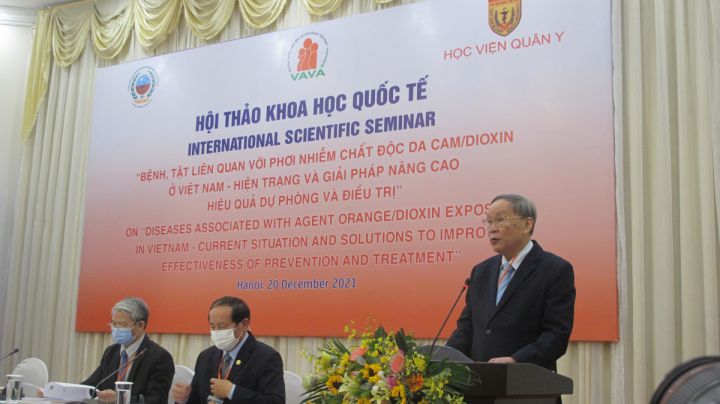

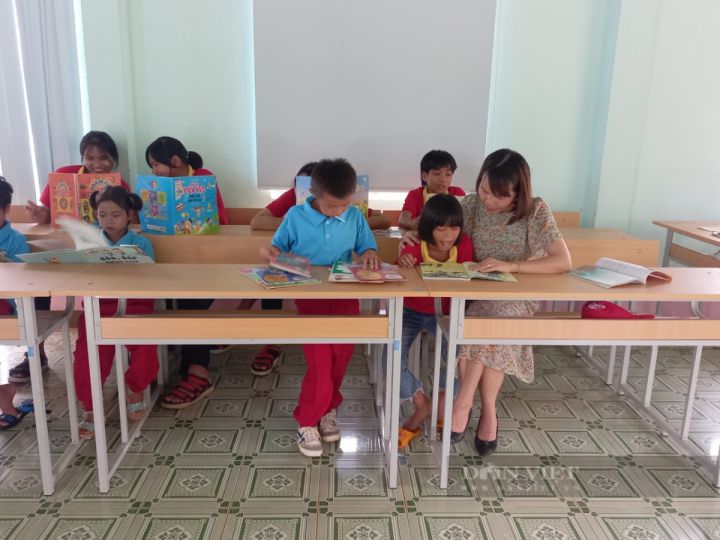
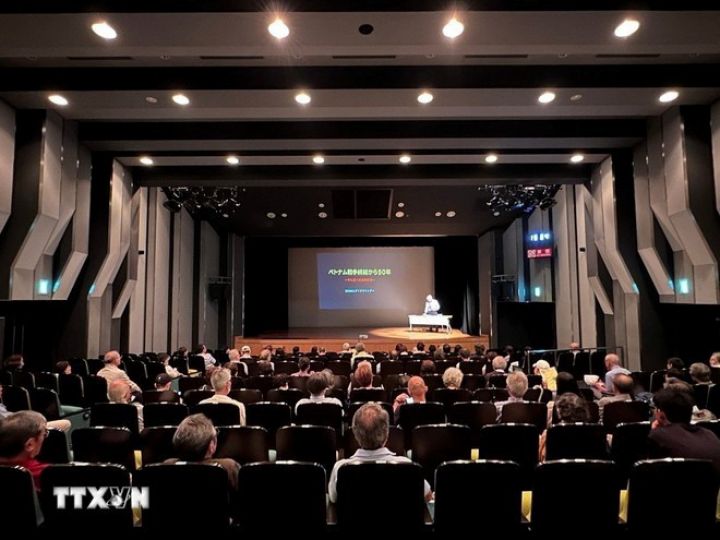


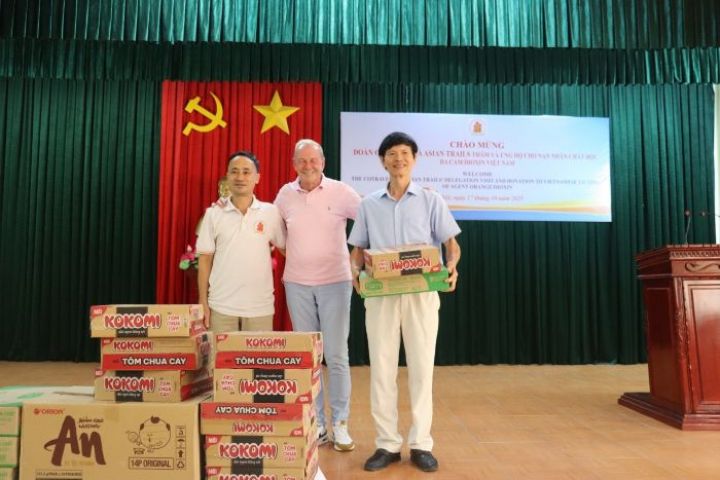












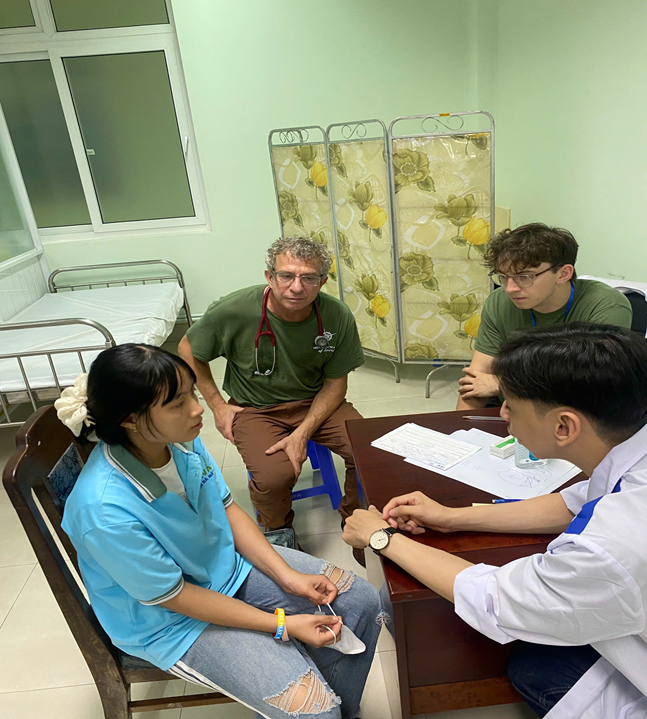
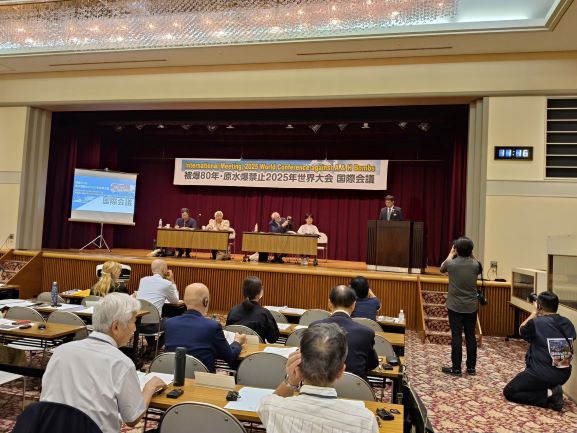
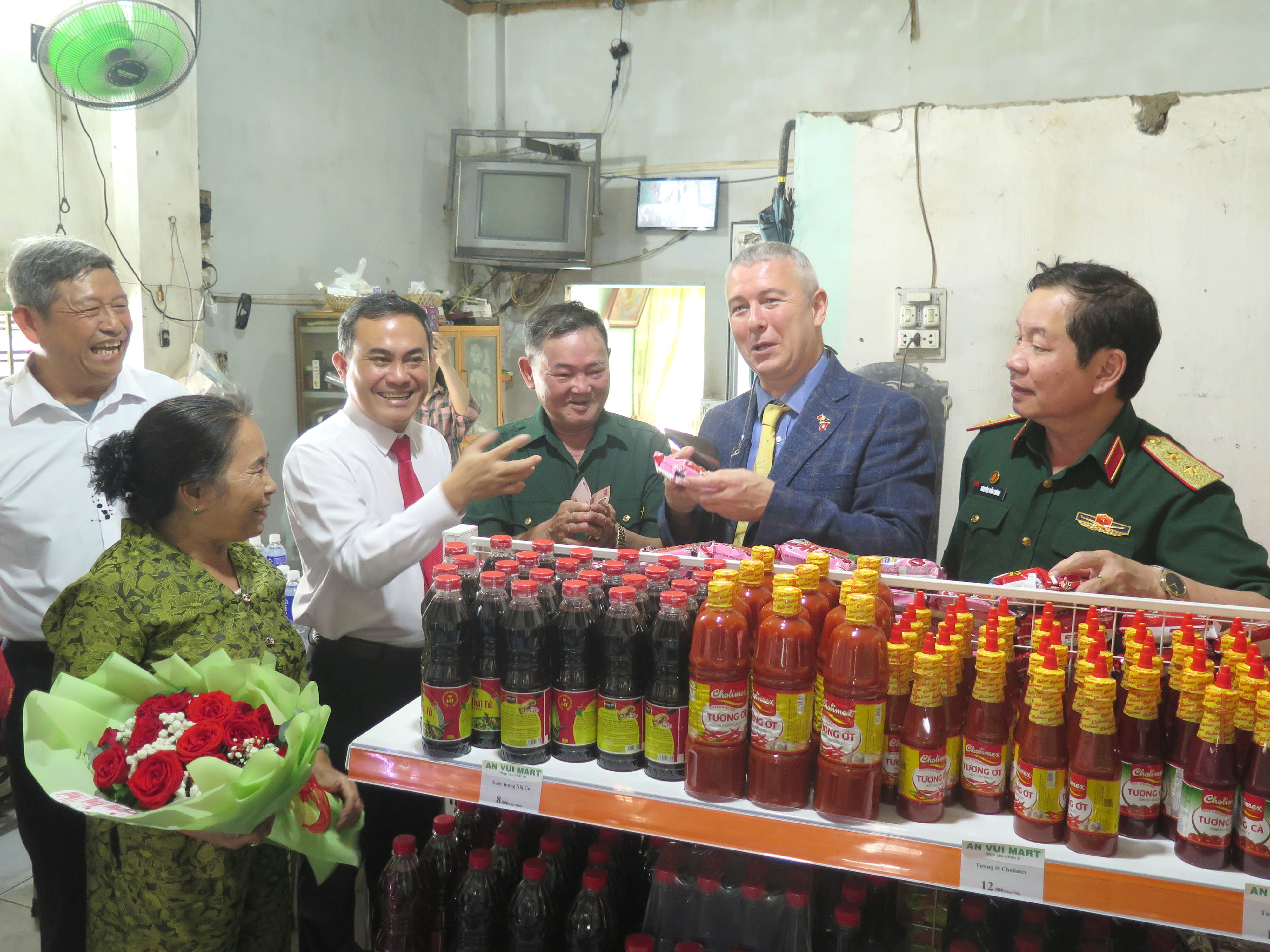
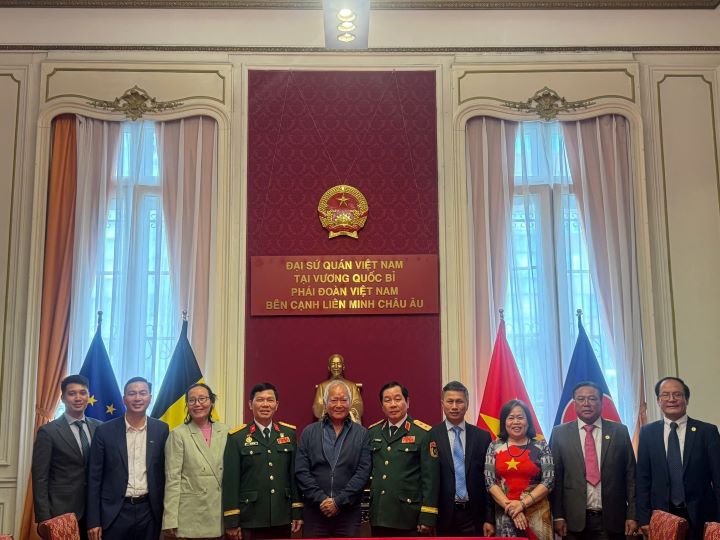

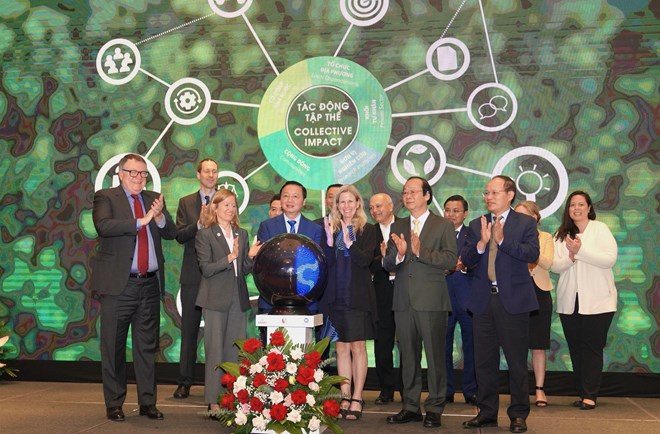

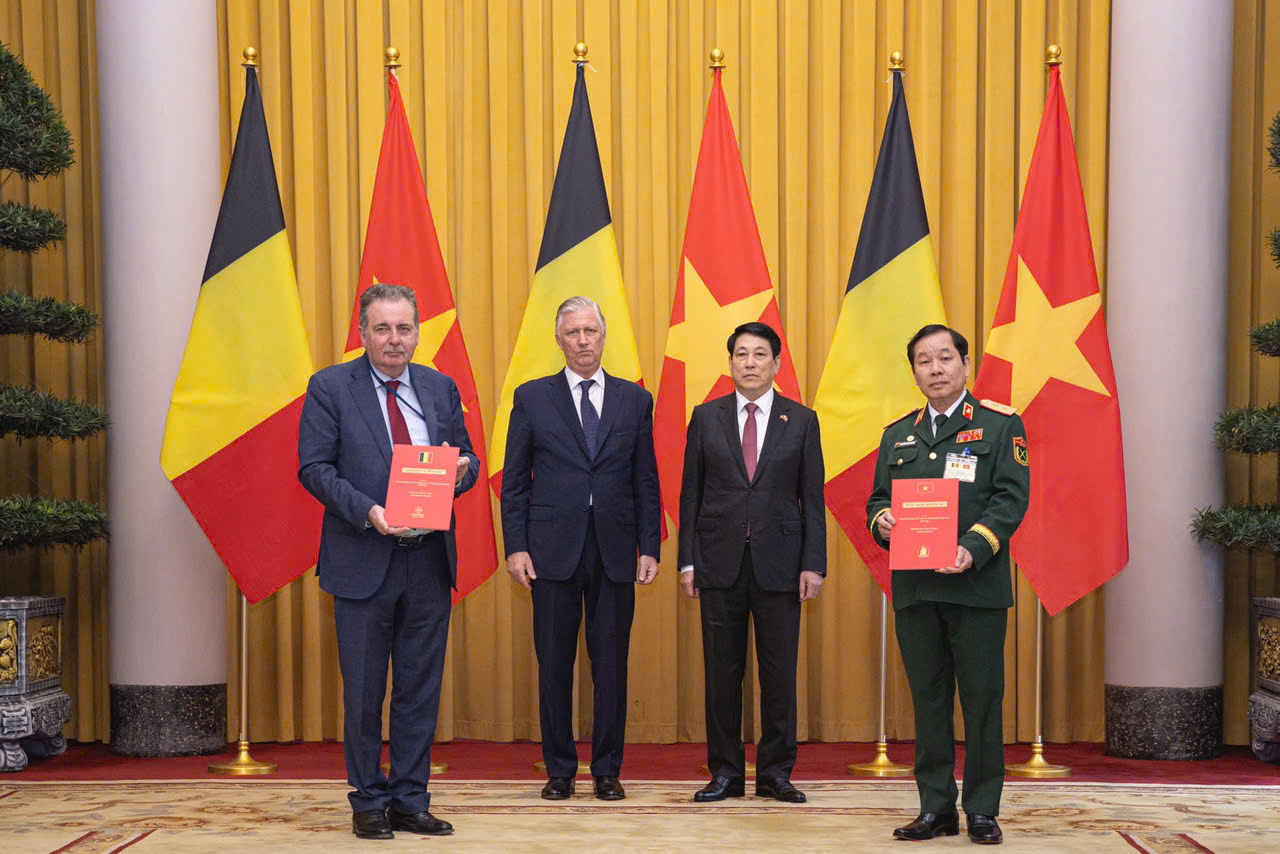


.jpg)
Comment